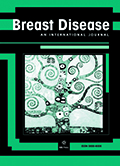Authors: Singh, Keerti | Agrawal, Lokita | Gupta, Rhea | Singh, Divyam | Kathpalia, Meghavi | Kaur, Navkiran
Article Type:
Review Article
Abstract:
Efficient treatment of cancer has been a subject of research by scientists for many years. Current treatments for cancer, such as radiotherapy, chemotherapy and surgery have been used in traditional combination therapy, but they have major setbacks like non-specificity, non-responsiveness in certain cancer types towards treatment, tumor recurrence, etc. Epidemiological data has shown that breast cancer accounts for 14% of cancer cases occurring in Indian women. In recent years, scientists have started to focus on the use of natural compounds like lectins obtained from various sources to counter the side effects of traditional therapy. Lectins like Sambucus nigra Agglutinin,
…Maackia amurensis lectin, Okra lectins, Haliclona caerulea lectin, Sclerotium rolfsii lectin, etc., have been discovered to have both diagnostic and therapeutic potential for breast cancer patients. Lectins have been found to have inhibitory effects on various cancer cell activities such as neo-angiogenesis, causing cell cycle arrest at the G1 phase, and inducing apoptosis. The major idea behind the use of lectins in cancer diagnostics and therapeutics is their capability to bind to glycosylated proteins that are expressed on the cell surface. This review focuses on an exploration of the roles of post-translational modification in cancer cells, especially glycosylation, and the potential of lectins in cancer diagnosis and therapeutics.
Show more
Keywords: Cancer, radiotherapy, chemotherapy, surgery, lectins, Sambucus nigra Agglutinin, Maackia amurensis lectin, Okra lectins, Haliclona caerulea lectin, Sclerotium rolfsii lectin, no-angiogenesis, cell cycle, G1 phase, apoptosis, glycosylated proteins, post-translational modification
DOI: 10.3233/BD-230047
Citation: Breast Disease,
vol. 43, no. 1, pp. 193-211, 2024





